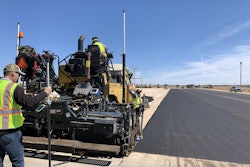
The construction industry is facing a defining moment. Contractors are navigating a complex landscape shaped by rising material costs, ongoing labor shortages and unpredictable supply chains. Every project today carries more risk — and less room for error.
Tariffs and inflation are steadily driving up project costs. Delays in material deliveries are forcing teams to shift schedules on the fly. Customers, too, are feeling the pressure and are increasingly price-sensitive and selective in choosing who they trust with their business. In this high-stakes environment, inefficiency is no longer just a nuisance — it’s a competitive disadvantage.
The way forward is clear: contractors must operate smarter and leaner. Efficiency has become the new edge. Technology, once considered optional, is now central to sustaining profitability and staying competitive.
Margin Squeeze: What's Driving the Pressure on Construction Profits
Across the board, contractors are seeing profitability squeezed from multiple angles. Material prices continue to surge — sometimes unpredictably — while tariffs and shifting global policies add volatility to already fragile supply chains. What used to be straightforward procurement has become a strategic balancing act.
Labor shortages are adding to the strain. With demand far outpacing supply, competition for skilled workers is driving up wages and leaving many teams short-handed. In response, contractors are being forced to make tough choices: take on fewer projects, overextend teams or risk underdelivering.
This strain extends into project planning and forecasting. Delivery timelines are inconsistent. Lead times for critical components shift from week to week. The knock-on effect? Quoting becomes more speculative, scheduling more reactive, and margins more vulnerable to last-minute surprises.
In this environment, the playbook must evolve. Leaders can no longer rely on legacy systems or manual workarounds. Staying competitive requires building greater resilience into operations — starting with the basics: how we plan, how we schedule, how we communicate and how we execute in the field.
Execution Over Theory: Turning Awareness Into Action
The real challenge is execution. Contractors don’t need more complexity — they need clear, immediate steps that create impact without overhauling everything overnight. The good news? Small shifts in how you schedule jobs, manage materials, and communicate with customers can unlock meaningful gains.
Let’s start with where time (and money) is often lost first — scheduling.
Action 1: Bring discipline to scheduling and job management
One of the most overlooked sources of lost revenue is poor scheduling. When visibility is low — on field executive availability, job urgency or location — teams spend more time reacting than executing.
Modern scheduling tools help match the right field executive to the right job, factoring in skills, proximity, and priority. With better visibility into daily operations, teams can reduce downtime, avoid last-minute reshuffles and improve on-time performance.
The impact is tangible:
- Higher productivity per field executive
- Fewer missed or rescheduled jobs
- Improved customer satisfaction and trust
Contractors who embrace smarter job management often see significant gains in resource utilization and service turnaround times — translating directly to better margins.
Action 2: Make materials management a strategic advantage
Disorganized inventory can quietly erode profitability. Stockpiling materials “just in case” locks up capital. Understocking, on the other hand, leads to job delays, missed deadlines and unhappy customers.
Modern inventory tools provide clarity — what’s available, what’s moving fast, what’s taking time to arrive. Layering in predictive analytics gives contractors the foresight to plan ahead, reduce surplus and minimize disruptions.
A more resilient materials strategy includes:
- Diversifying suppliers to reduce single-source risks
- Maintaining a buffer of critical items
- Using real-time demand forecasting aligned to pipeline and seasonality
- Tracking inventory across all locations — whether it’s on a truck, in a warehouse or out on a job site
With tighter control over inventory and procurement, contractors can minimize waste, free up working capital, and deliver jobs more reliably — even when others are stuck waiting.
Action 3: Invest in customer experience as a margin strategy
Customers today are more discerning. They’re comparing quotes, evaluating value more critically, and switching providers faster when service falls short. In this environment, experience isn’t just a differentiator — it’s a defense for your pricing.
Strong communication is the foundation. Contractors who proactively share updates, timelines and service status earn trust — and with it, greater pricing flexibility.
Elevating customer experience leads to:
- Higher retention and lifetime value
- Lower acquisition costs via referrals
- Less pushback on pricing due to perceived value
Experience doesn’t end with project completion. Feedback loops, reviews, and continuous engagement show commitment to improvement — a trait customers increasingly reward with loyalty.
The Next Frontier: How AI Is Already Transforming Field Operations
AI is no longer a concept on the horizon — it’s already reshaping field service. From intelligent dispatching to predictive maintenance and automated customer communications, AI is driving new efficiencies across the board.
For contractors, this means:
- Predictive scheduling that suggests optimal routes
- AI-powered diagnostics that catch failures before they happen
- Chatbots that handle common queries, freeing up your team for more strategic work
The strength of AI lies in its ability to scale capabilities without scaling complexity. You don’t need to add headcount or rip out your tech stack to benefit. But effective adoption requires one principle: AI should support human judgment, not replace it. The best tools empower field executives with better data, not override their expertise.
Lead or Fall Behind: Why Now Is the Time to Modernize
The pressures facing construction leaders are real — and growing. But pressure can also be a catalyst. The time to modernize is now. Contractors that adopt smarter scheduling, better materials management and customer-first strategies will emerge not only intact — but ahead.
Let’s be clear: technology isn’t just a line item on the balance sheet. It’s a lever for stability, resilience, and long-term growth. And in an industry where margins are often razor-thin, those who invest in adaptability today will define the market tomorrow.



















